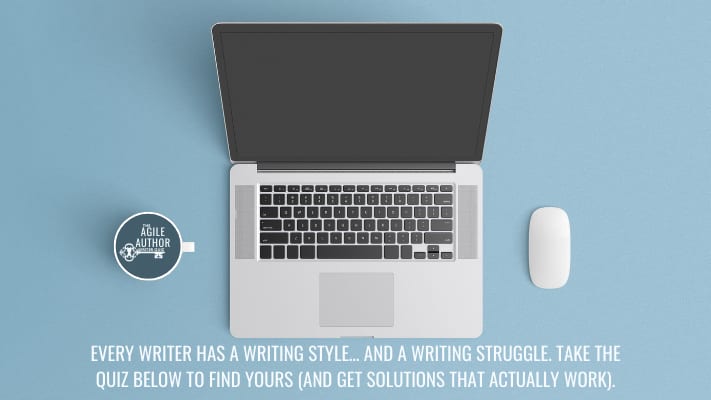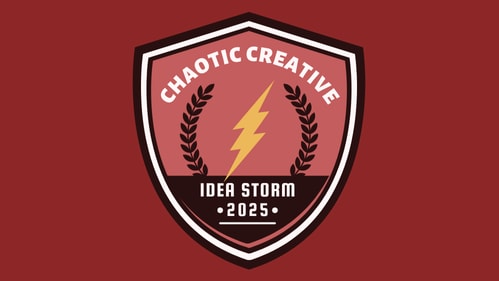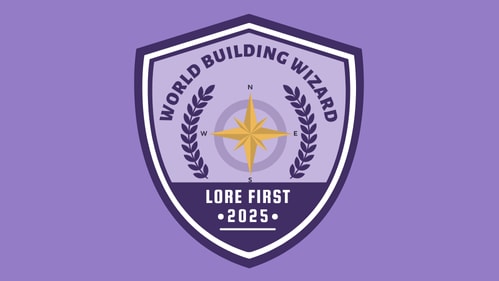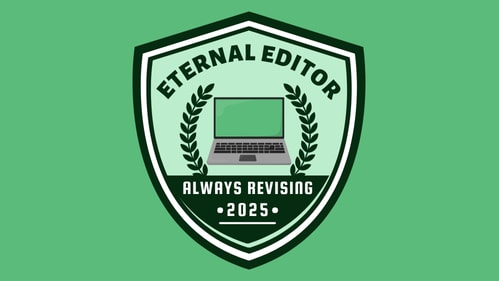What's Your Writing Style?
You’ve got stories to tell — so why is writing them so hard sometimes?
Whether you’re a perfectionist stuck in draft one, a vibe-chasing plot tornado, or a planner with no pages, this quiz will call you out (lovingly) and help you finally figure out what’s blocking you.
Get your result, your custom Agile Author badge, and some advice tailored to your writing brain. Let’s turn your chaos into progress.

When you sit down to write, what actually happens?
Your writing space looks like...





How do you usually feel about your writing?
What does your editing process look like?
Your outline is...
What's your biggest writing fear?





Be honest. How many writing projects are you juggling right now?
Want Blog Updates?
By signing up, you'll get occasional updates to the blog...and maybe a few freebies and goodies! I don't believe in email spam, so be forewarned that if you're expecting weekly/daily/hourly emails you will be disappointed.
You're the Chaotic Creative
You’re a storm of brilliance, vibes, and plot holes.
Your story lives in sticky notes, Notes app rants, and that one Pinterest board you forgot existed. Structure? Eh. Deadlines? Vague concept. You are powered by spontaneous combustion.
Your Biggest Block:
You have no clue what to do next — and too many ideas to start.
What You Need:
To contain the chaos. Agile gives your ideas a home (hello, backlog) and your current focus a spotlight.
Agile Solution:
• Start with a Kanban board: To Do → Doing → Done. Visuals are your love language.
• Create a brain dump backlog so nothing gets lost.
• Use focus sprints to work on one shiny object at a time.
Try this: Pick 3 things from your backlog and give yourself 1 week to tackle just those.

You're the World Building Wizard
You’ve built an entire empire. And yet... there’s no story.
You’ve got maps, magic systems, family trees, and maybe a minor obsession with naming cities. Your story bible could get published before your novel does. Drafting? Um. Soon.
Your Biggest Block:
You want everything ready before you start — but nothing ever feels ready enough.
What You Need:
A bias toward action. Agile helps you stop planning and start doing.
The Agile Author Solution:
• Move tasks from your planning backlog into a sprint every week.
• Add a column to your Kanban board called “Drafting.” Use it.
• Set a minimum viable scene goal. Something rough but real.
Try this: Write one scene set in your world. Even if the culture isn’t fully fleshed out. (Yet.)

You're the Busy Bee
You dream of writing... when you’re not managing three other lives.
You write in parking lots. Between meetings. While reheating your coffee for the third time. You care deeply — you just never have enough time.
Your Biggest Block:
Time scarity + guilt. You think writing needs hours of silence. It doesn't.
What You Need:
Tiny, intentional focus sessions. Agile's secret weapon? Timeboxing. Use the time you do have.
The Agile Author Solution:
• Set 15–30 minute micro-sprints.
• Try a daily check-in: “What can I do today in the time I have?”
• Use a flexible backlog to track progress even in bite-sized bursts.
Try this: Block 20 minutes, once a day, for 1 week. Anything that gets done = a win.

You're the Serial Starter
You fall hard. You fall fast. And then… you fall into a new project.
You’ve started five novels, plotted three more, and googled “how to write a book” every January since 2016. Commitment is hard. Finishing? Harder.
Your Biggest Block:
Boredom. Burnout. Shiny new ideas. Maybe all three.
What You Need:
Limits. (Not creativity limits — just focus ones.) Agile helps you keep a focused mindset so you can actually reach the finish line.
The Agile Author Solution:
• Use WIP (work in progress) limits — max 1–2 open tasks.
• Sprint planning: Pick one project. Just one. For 1–2 weeks.
• Review your sprint. Reflect. If focusing on only one or two tasks is optimal, keep following the pattern for future sprints.
Try this: Commit to one project for your sprint, and only complete a few tasks from that project. Put everything else you want to work on in your backlog to work on in a later sprint. I promise they'll still be there at the end of the sprint.

You're the Eternal Editor
You could move on… but you won’t.
You’ve rewritten the same paragraph so many times it now resembles emotional confetti. You’ve got taste (and maybe a little fear), and it shows — you just can’t seem to call anything “done.”
Your Biggest Block:
Perfectionism dressed up as productivity. You're working, yes — but mostly in circles.
What You Need:
A definition of done. You need someone (spoiler: it’s you) to say “this chapter is good enough for now.” Agile thrives on iteration — write it once, move on, fix it later.
The Agile Author Solution:
• Use sprints to limit how long you’re allowed to edit.
• Set a “definition of done” checklist (e.g. plot point is hit, characters feel real, no gaping holes).
• Keep moving. Revisions come later. That’s what future you is for.
Try this: Start a 7-day editing sprint. When the sprint ends, so does your editing.
